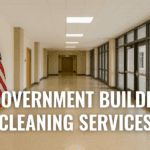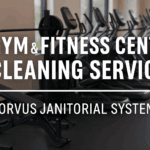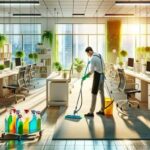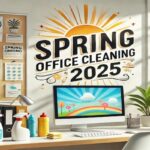Written by Emma Pearson
Every time a cleaning professional steps onto a new job site, they go to war against an unseen enemy – microscopic dust particles, stubborn stains, and even potentially harmful germs. Their weapons? A variety of cleaning agents and their professional expertise. But what about their armor?
In the daily hustle of keeping environments spotless, the aspect of personal safety is often overlooked. Yet, it’s the key to maintaining not only their health but also their efficiency at work.
This article isn’t just another safety manual. It’s a call to arms, a detailed strategy guide for those brave warriors of cleanliness to protect themselves.
Understanding the Risks Involved
Navigating the world of professional cleaning involves more than pristine results—it means understanding and mitigating inherent risks. Indeed, the cleaning industry, like any other, comes packed with its specific hazards. One could easily underestimate the danger lurking behind everyday tasks. These risks range from the seemingly mundane, such as slips and falls, to the more critical concerns like dangerous chemical exposure.
The environment in which cleaning professionals operate further compounds these risks. A high-rise window cleaner not only battles grime but also faces the heightened risk of falls. Similarly, hospital sanitation tasks may mean coming into contact with biohazardous waste. Even restroom cleaning can expose a person to harmful bacteria and viruses.
Essential Safety Equipment for Cleaning Professionals
Proper personal protective equipment (PPE) forms the foundation of safety. Common protective gear, such as gloves, protective eyewear, and masks, safeguard professionals against skin irritations, eye injuries, and harmful inhalants.
Yet, some cleaning scenarios require specific equipment. Working at elevated heights, for instance, necessitates the use of active fall arrest restraint systems, such as those you’ll find at EdgeFallProtection.com. It can include safety harnesses and lanyards. These systems not only align with OSHA’s fall protection standards but are also indispensable for preventing fatal falls.
Proper use of this equipment extends beyond merely wearing it. Regular inspection and maintenance are essential to preserve its reliability. Furthermore, correct usage training enables individuals to exploit the equipment’s full protective potential, as recommended by OSHA’s safety training guidelines.
Proper Use of Cleaning Chemicals
A multitude of chemicals, each with its unique set of hazards, underscores the cleaning industry. Mismanagement or accidental exposure to substances such as bleach or ammonia can result in burns, respiratory issues, or in severe cases, blindness.
Handling and storage of these substances necessitate strict adherence to safety protocols. Complying with OSHA’s Hazard Communication Standard (HCS) ensures workers’ protection. Always store chemicals in a cool, dry place, away from sunlight and heat sources. If children are present, consider using a locked cabinet.
Quick response during chemical accidents is critical. Familiarize yourself with Material Safety Data Sheets (MSDS) for every chemical you use. They provide in-depth information on chemical properties and emergency procedures.
Importance of Regular Training and Updated Safety Protocols
The value of safety protocol training is immeasurable. Regular training familiarizes employees with new safety standards, potential risks, and techniques to prevent accidents. Employers must continually update safety protocols to reflect the latest research and standards, as advocated by OSHA’s guidelines.
Training should encompass a variety of topics, from correct equipment usage to handling chemicals appropriately. It should also include emergency procedures, such as actions during chemical spills or a colleague’s fall.
Conclusion
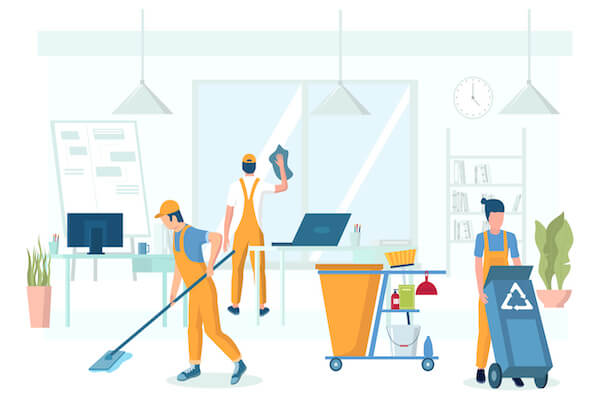
Building a safe and healthy work environment is an ongoing process requiring vigilance and continual learning. The right safety equipment, adherence to OSHA regulations, and frequent safety training can significantly minimize risk exposure. Remember, committing to safety protects you and contributes to healthier environments for everyone involved.



